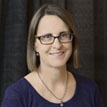|
| |
Higher Level Proficiency Development and Progression RatesErin N. O'Reilly, University of Illinois at Urbana-Champaign Sue Ingels, University of Illinois at Urbana-Champaign  Erin O'Reilly  Sue Ingels students will satisfactorily pass that level's learning outcomes and move on to the next level (e.g., to Level 300); learners share this expectation. The problem at hand is that there is a significant drop in the progression rates at the highest levels in the program. While several possible reasons exist for the division, the nature of proficiency development plays a key role. The program’s course outcomes are aligned with the ACTFL proficiency scale. The ACTFL scale is often illustrated as an inverted pyramid, with “Superior” levels at the top and “Novice” levels at the bottom (ACTFL, Inc., 2012). This is done purposefully to reflect the content mastery at each level. At the lower levels, represented by the narrow point on the pyramid, a finite amount of material exists which students need to master in order to move on to the next level, be it use of the progressive form, asking 'wh-' questions, or holding a short, simple conversation about an everyday topic. Moving up the proficiency scale, the breadth and depth of language skills a learner is expected to master at a particular level grows exponentially. Eventually, the learner develops the skills needed to master a range of linguistic tasks, represented by the Superior level and the widest ban on the top of the pyramid. Parallel to understanding the content range at each level, is understanding how the amount of time it takes to reach each progressive level varies, which is highly dependent on the learners’ first language. Using English native speakers learning a foreign language, research shows that it will take a Spanish learner 200 classroom hours to move from Advanced to Superior. An Arabic learner, however, will require 1100 hours to make the same proficiency gains (Wang, Jackson, Mana, Liau, & Evans, 2010). While arguably not specific to the ESL context, the nature of higher-level language proficiency remains constant. The challenge as a program administrator is providing a course that reflects learners’ expectations of their proficiency development while simultaneously meeting learners’ differing needs as they move up the proficiency scale. Understanding the nature of proficiency development can assist in this process, as it should necessarily guide: (1) course outcomes, (2) teaching, (3) materials, and (4) student placement. The following questions are designed to help in this reflective process: 1. Course Outcomes: How well are course outcomes aligned with student needs at each level? Are the various course components (e.g., teaching materials, teaching methodology, assessments, and program length) effectively aligned with the course outcomes? Where might a mismatch in the course outcomes and the program components be holding learners back? Using a matrix to track course outcomes throughout a program’s sequence of instruction can provide teachers and administrators a macro-level overview of how well the program is supporting stated course outcomes (Allen & Noel, 2002). 2. Teachers: Do the teachers assigned to deliver the higher-level courses have the necessary background and training to successfully ensure that all students can achieve the outcomes? Do they have training in differentiated instruction for learners who progress at unequal rates? Instructors cannot employ a “one size fits all” approach, but rather must adapt to meet individual needs when teaching to higher levels (Jackson, 2003); differentiated instruction at this level can ensure that all learners are equally challenged and equally supported (Tomlinson, 2001). 3. Materials: How do course materials align with course outcomes? Is there a diversity of materials to suit learners' differing needs? Higher-level courses should encompass a range of learning materials reflecting different learning approaches, for example: drill books, grammar exercises, and task- and content-based materials (Jackson, 2003). 4. Student Placement: Are the students who enroll in the higher-level courses placed appropriately? Are there certain L1 differences within a class which will result in unequal student progression? Identifying the latter early on will allow teachers to provide additional support to their students if needed. In sum, the nature of proficiency development at the higher-levels means that caution should be used when mapping course scope and outcomes against a proficiency scale, especially at the higher levels where proficiency development rates can vary greatly between learners. In conjunction with progression rates and student demographics, analyzing the four elements above in higher-level courses can help administrators uncover latent problem areas within a program. Biography Erin N. O'Reilly is the director of the Intensive English Institute at the University of Illinois at Urbana-Champaign. Sue Ingels is a lecturer and currently heads the accreditation committee at the Intensive English Institute at the University of Illinois at Urbana-Champaign. References ACTFL, Inc. (2012). Oral proficiency interview familiarization manual. Retrieved from http://www.languagetesting.com/wp-content/uploads/2012/07/opi.familiarizationmanual.pdf Allen, M. & Noel, E. (2002, March). Outcomes assessment handbook. Bakersfield, CA: California State University Bakersfield. Jackson, F. H. (2003). Observation on training beyond 3 in an institutional setting. In B. L. Leaver, & B. Shekhtman (Eds.), Teaching and learning to near-native levels of language proficiency: Proceedings of the spring and fall 2003 conferences of the coalition of distinguished language centers (pp. 135-140). Salinas, CA: MSI Press. Tomlinson, C. A. (2001). How to differentiate instruction in mixed-ability classrooms (2nd ed.). Upper Saddle River, NJ: Merrill Prentice Hall. | |
| ITBE Link - Fall 2014 - Volume 42 Number 3 |